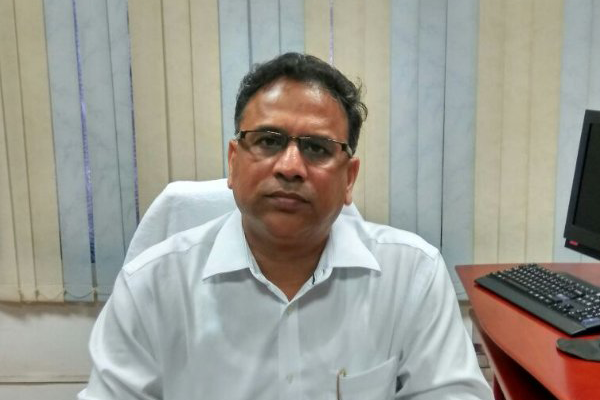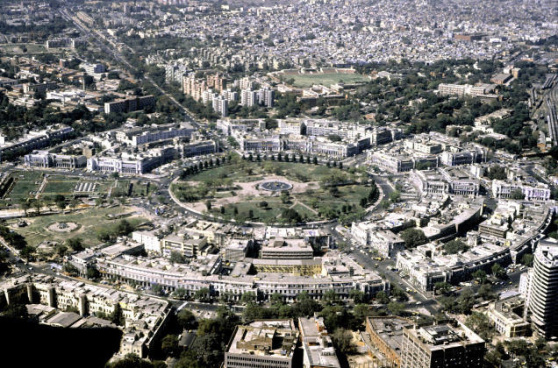
Cities in India are growing rapidly. Our urban centers serve as engines of economic growth, with 60% of the GDP emerging from them, and offer opportunities for employment, markets to prosper, improved living standards, and thriving culture. Many cities across India are making tremendous efforts to meet the ever-increasing demand for resources and services from their expanding populations, even with constrained municipal budgets. In this context, cities must also confront the added challenge of a changing and increasingly extreme climate.
According to the Intergovernmental Panel on Climate Change (IPCC), the frequency and intensity of heat waves have increased globally. Cities in India potentially face twice the levels of heat stress compared to their rural surroundings. The observed impacts on productivity, health, and well-being are most pronounced among the most vulnerable, economically, and socially marginalized urban residents. Climate change is, and will continue to be, a significant driver of this intensification. However, our rapid and often poorly- planned urban growth, loss of green spaces and water bodies, increasing car use, and extensive use of concrete and other heat-absorbing materials also play a significant role. The phenomenon wherein urban areas experience higher temperatures than suburban areas, known as the Urban Heat Island Effect (UHIE), indicates that cities are grappling with both extreme heat and the subsequent repercussions, necessitating urgent action. According to the National Disaster Management Authority, cities with pronounced UHIE further intensify the impact of heat waves.
Already in India, there’s an increasing trend of heat waves, with a growing number of states and cities affected by their frequency and severity. The rising ambient temperature in cities is leading to greater reliance on air-conditioned buildings. This strains our power grids and releases more heat into the city air, perpetuating the UHIE in a harmful feedback loop.
Heat stress adversely affects health, comfort, and productivity. The International Labour Organization (ILO) suggests that India will lose 5% of its GDP by 2030 due to rising temperatures. There has been a 75% increase in lost labor hours due to heat in the last two decades. Urban India also has a sizable informal sector with inadequately cooled workplaces.
Considering the escalating heat and cooling demand, our cities are extremely vulnerable and face substantial economic costs from lost productivity, increased heat, and high energy consumption for cooling. The immense pressure on health services and power and water supplies during heatwaves might only be a glimpse of what’s to come unless comprehensive action is taken.
Sustainable Cooling for Heat-Resilient Indian Cities
This comprehensive action includes reintroducing nature into our cities by significantly increasing tree canopy, urban forests, and water bodies; designing heat-resilient urban areas and using reflective roofs, roads, and pavements to ventilate our cities and prevent heat entrapment; prioritizing efficient transport planning and public transport to reduce car-induced heat; mainstreaming passive cooling into all buildings — especially for those who cannot afford ACs; and implementing sustainable cooling solutions like district cooling. All these steps can mitigate the UHIE and transform our urban areas into heat-resilient cities.
We also need to prepare more diligently for heatwaves in all cities, ensuring our citizens and infrastructure (like health, power, water, and shelters) are sufficiently safeguarded.
UHI mapping is a pivotal recommendation for all heat-vulnerable cities in India. These maps identify urban zones with higher surface and air temperatures during summer, compared to suburban areas, termed as hotspots.
UHI intensity varies across cities based on built-up density, green cover percentage, and street geometry. For instance, UHI studies in Bangalore revealed a temperature difference of 7°C in different areas based on urban planning attributes of the local zones/ wards.
Once hotspots are identified through UHI maps, they can be analyzed to incorporate heat mitigation measures such as strategic tree planting, road shading, using permeable pavements, green roofs, and designing passively cooled buildings.
The National Disaster Management Authority (NDMA)’s revised guidelines recommend that each city assess its Master plan and built environment to identify the primary contributors to and controllers of UHI magnitude. This will help implement long-term urban planning and mitigation measures.
Several international examples can guide UHI mitigation measures and heat action planning. For instance, Madrid has committed to planting up to 450,000 native trees by 2030 to alleviate UHI. Ljubljana, Slovenia, closed 10 hectares of city-center land to motor vehicles, renovated roads, and expanded tree canopy cover, resulting in reduced temperatures and noise pollution. This highlights the synergy between green spaces and reduced transport.
Cities in India are already enhancing their resilience against heat, but there’s more to accomplish. About 30 cities have conducted UHI analysis. Ahmedabad has integrated cool roofs as a resilience measure, and Chennai is utilizing UHI assessments to inform a new master plan, including district cooling systems, passively cooled affordable housing, and nature-based cooling.
Also Read | Adaptive Urbanomics: Cities and Climate Resiliency
Going forward, cities will need more support. At UNEP, we’re collaborating with the Ministry of Housing and Urban Affairs, National Institute of Urban Affairs, the Government of Denmark, and other partners on an India Urban Cooling Programme within the Cool Coalition framework. This collaboration aims to raise awareness and support Indian cities as they adapt to rising temperatures and address the escalating cooling demand sustainably.
Views expressed by Dr. Divya Datt, Senior Programme Manager, United Nations Environment Programme (UNEP) India Office & Minni Sastry, Advisor to UNEP on Heat Resilience & Adjunct Faculty – R V College of Architecture





















